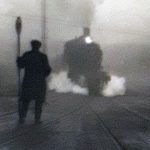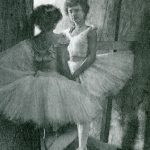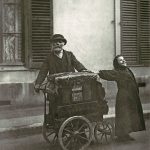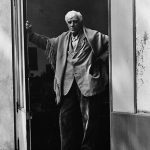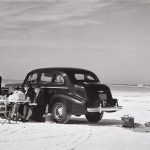PAUL STRAND AND THE MASTERS OF AMERICAN PHOTOGRAPHY
Exhibition organized by the Reading Public Museum, Reading, Pennsylvania and Cedarhurst Center for the Arts
Exhibit Sponsors: WSIU Public Broadcasting
Gallery Sponsors: Hunt and Donna Bonan 
Members’ Preview | Saturday, February 17 | 6:30 to 8:30 pm
Preview Admission for Members is Free | Guests – $5 Admission
Gallery Talk | Rusty Freeman, Director of Visual Arts History & Form in Photography Saturday, February 17 – 6:00 pm Sunday, April 22 2 1:30 – 2:30 pm
Gallery Admission: $5 per person | Cedarhurst Members Free (children 10 and under free) | All admission is Free each Thursday
INTRODUCTION
by Rusty Freeman, Director of Visual Arts, Cedarhurst
Born in 1890, Paul Strand made a lasting impact on 20th century photography. Strand introduced what Modernism would mean in Photography. Modern Art (Impressionism, Post-Impressionism, Cubism, et.al.,) strove for “Truth to Materials,” and “Form Follows Function.” This meant using a media’s materials in an undisguised way. The best example of this “disguised way” is how early photography tried to emulate painting. Early photography strove to validate itself by copying the more prestigious art form, painting, and in particular by emulating Impressionism. Pictorialism, as the best in early Photography was called, was eventually seen as hiding what photography did best, which was to accurately depict the world. To be Modern, meant to strive for honesty and truthfulness in artmaking.
Strand set the standard by which photography would be seen as true to Modern Art. The new standard was called “Straight Photography.” Straight Photography means Modernism in Photography and it means taking photographs as clear and as focused as possible, straight.
But if photographers are simply shooting “straight,” how is it an “expressive” art form? Strand set the standard here as well—with selection of subject matter and composition. Strand studied Picasso and Braque’s Cubism very closely. Picasso and Braque were “abstracting” subjects and objects from real life and rewriting these objects in the language of Cubism. Composition and framing play key roles in abstraction. Strand applied what he learning from Cubism in his landmark work, White Fence, 1916. White Fence is less about the actual things depicted, and more about seeing the objects as abstract patterns across the photograph, a radical idea at the time.
Paul Strand was a Humanist. Humanism recognizes the value and dignity of all people. Strand expressed his personal and social values through his photographs which portrayed people with esteem; Blind Woman, Mr. Bennett, and Young Boy are some of the famous examples.
With these two approaches to photography—abstraction and people—Strand set in motion the main themes of Modern Photography and which are still evident in today’s contemporary photography.
Strand’s 20 photographs in the Cedarhurst Permanent Collection are equal in historical value and importance to any of the major oil paintings in our collections by Mary Cassatt, Thomas Eakins, or George Bellows.
In this exhibition, key photographers to take note of are the early work of Alfred Stieglitz, Edward Steichen, Eugene Atget, and Berenice Abbott. Next are two giants of Modernism in Photography, Ansel Adams and Edward Weston; both understood what Strand established and in many ways perfected subject matter and abstraction in their own works. The photographers that coalesce around the contexts of “social documentary,” or “social landscape,” or “photojournalism” are also the predecessors of today’s photographers. Study closely how the photographs depict and what the photographs depict in the works by Walker Evans, Dorothea Lange, Margaret Bourke-White, and Marion Post Wolcott, or Lee Friedlander.
By studying the various examples in this exhibition, some of which are masterpieces, the major criteria for judging photography may be learned. And we have with Strand and Charles Sheeler’s groundbreaking art film Manhatta,1920, at least introduced photography’s eminent connection to film.
Photographs are complex works of art that require multiple readings to fully analyze and pull apart the layers of aesthetic, cultural, ideological, sociological, and psychological meanings and functions. All art is multi-symbolic.
In our unpacking (analysis) of photographs, we first accept the photograph’s denotative reading, but, second, we realize the potential to explore the image’s connotations, social and otherwise.

